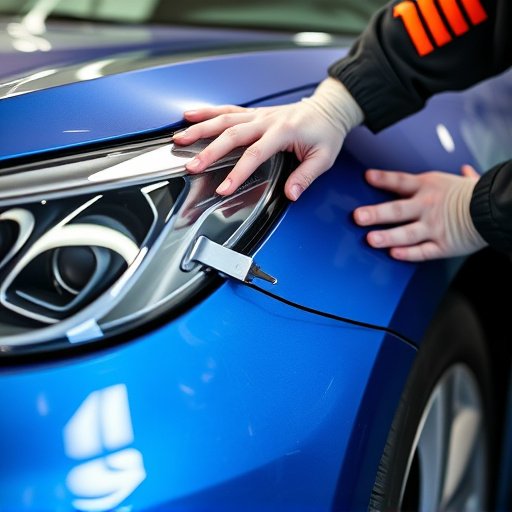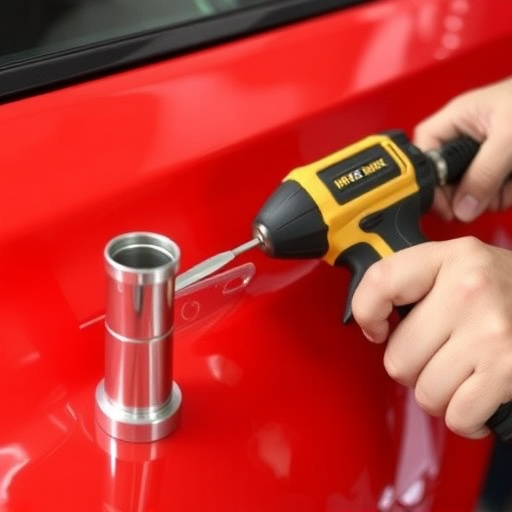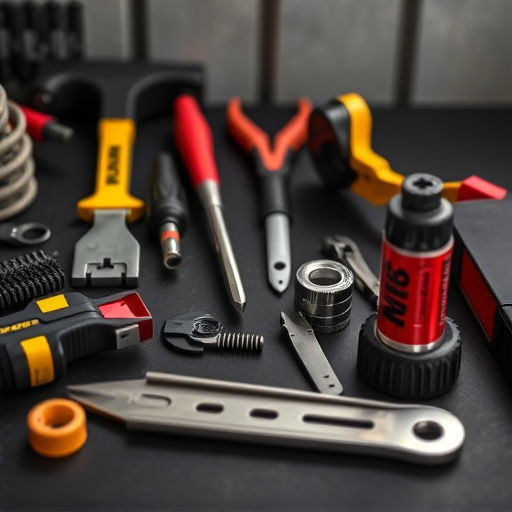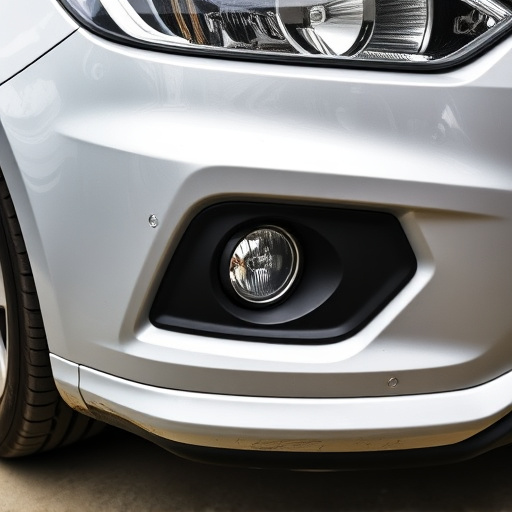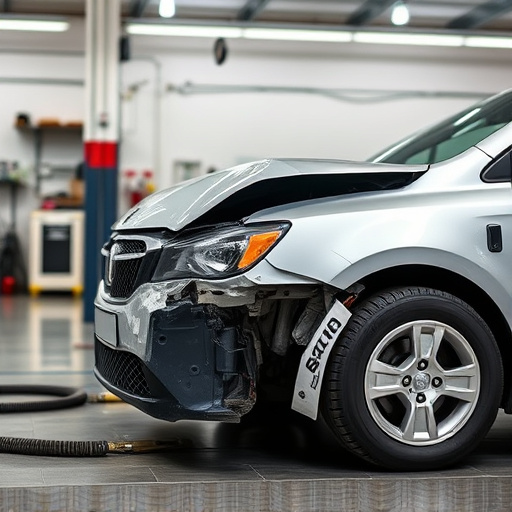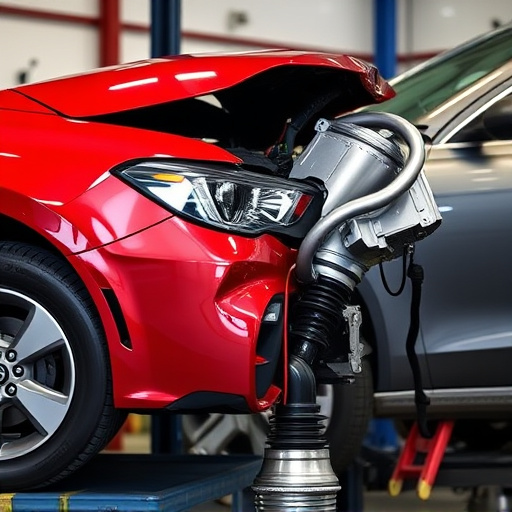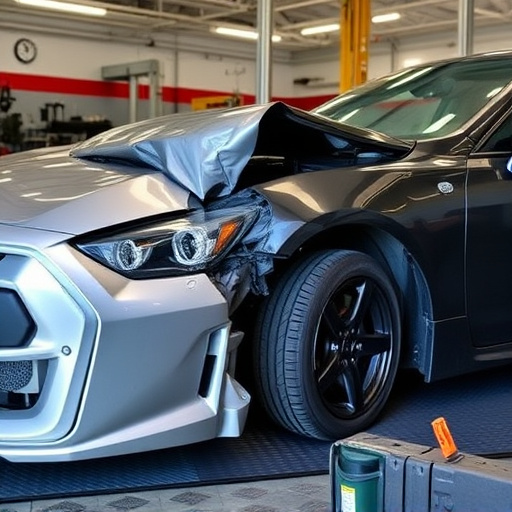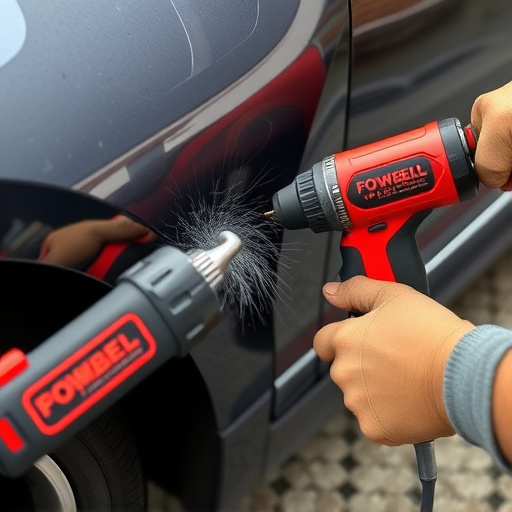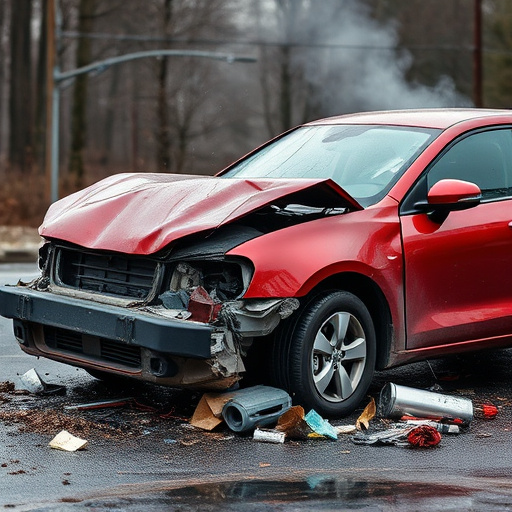Tesla carbon fiber repair poses unique challenges due to its rigid, non-metallic structure, requiring specialized tools and techniques including composite adhesives, precise alignment, and careful sanding. Strict safety protocols, such as PPE and good ventilation, are essential. This meticulous process involves surface preparation, compound application, shaping, and final polishing for optimal aesthetic results that preserve Tesla vehicles' luxury look, both for modern models and classic restorations.
“Tesla vehicles are renowned for their cutting-edge design, including the innovative use of carbon fiber composite materials. When it comes to repairs, understanding the unique properties of this material and adhering to strict safety protocols is essential. This guide delves into the intricacies of Tesla carbon fiber repair, offering valuable insights on material properties, safety precautions, and efficient handling techniques for professionals and enthusiasts alike.”
- Understanding Tesla Carbon Fiber Material Properties
- Safety Precautions for Carbon Fiber Repair
- Step-by-Step Handling Guidelines for Efficient Repairs
Understanding Tesla Carbon Fiber Material Properties
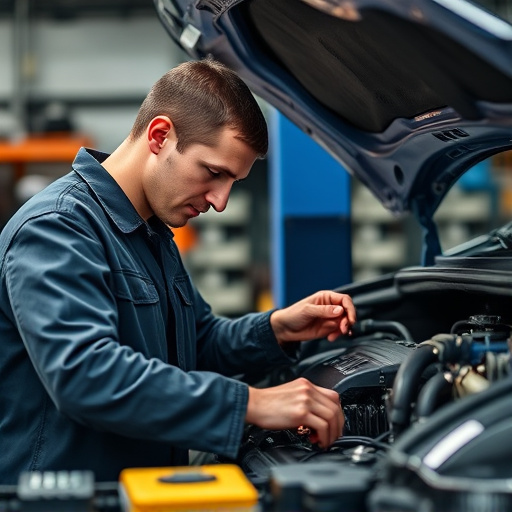
Tesla’s utilization of carbon fiber in their vehicles brings unique challenges for collision repair and car dent removal compared to traditional materials. Understanding the properties of this advanced composite is crucial for effective Tesla carbon fiber repair. Carbon fiber, known for its exceptional strength-to-weight ratio and durability, also exhibits specific characteristics that technicians should be aware of. Its rigid structure and non-metallic nature demand specialized tools and techniques during the repair process to ensure structural integrity and aesthetic precision.
When undertaking any car repair services, especially for Tesla models with carbon fiber bodies, technicians must adhere to strict protocols. This includes using appropriate adhesives designed for composite materials, precise alignment, and careful sanding to minimize material damage. The intricate nature of carbon fiber repair requires a high level of skill and expertise in car dent removal, making it a specialized task within the collision repair industry.
Safety Precautions for Carbon Fiber Repair
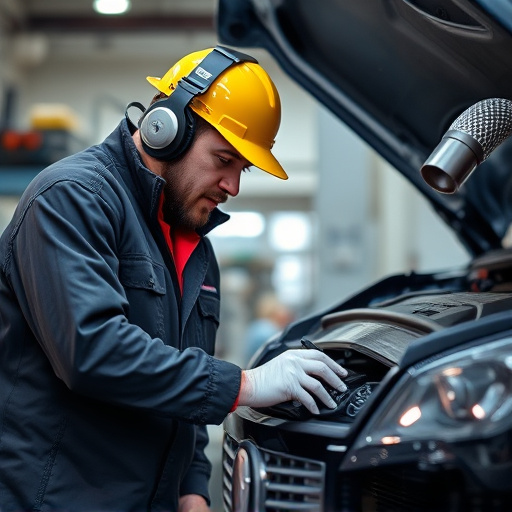
When conducting Tesla carbon fiber repair, prioritizing safety is paramount. Carbon fiber, despite its strength and lightweight properties, can pose unique risks during the repair process. Essential safety precautions include wearing appropriate personal protective equipment (PPE), such as safety glasses to shield from debris and dust, gloves to prevent skin irritation or cuts, and a respirator to filter airborne particles. The workspace must be well-ventilated to minimize exposure to volatile organic compounds (VOCs) often released during carbon fiber repair.
Proper handling of tools and materials is crucial for Tesla carbon fiber repair. Utilize specialized tools designed for working with carbon fiber to reduce the risk of damage or injury. Maintain a clean, organized workspace to minimize trip hazards and ensure easy access to necessary materials. Adhering to these safety protocols not only protects the technician but also ensures the integrity of the repair, preserving the Tesla’s aesthetic appeal and structural soundness, whether for contemporary models or classic car restoration.
Step-by-Step Handling Guidelines for Efficient Repairs
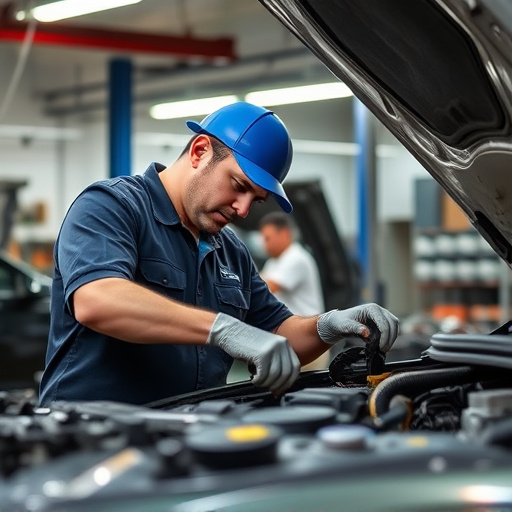
When undertaking Tesla carbon fiber repair, adhering to a structured handling process is key to ensuring precision and efficiency. Here’s a step-by-step guide for optimal results:
1. Preparation: Begin by thoroughly inspecting the damaged area, identifying the extent of the carbon fiber impact or crack. Gather all necessary tools and materials, including specialized repair kits designed specifically for Tesla vehicles. Don personal protective equipment (PPE) to mitigate exposure to harmful substances during the repair process.
2. Cleansing and Surface Preparation: Using a mild detergent and deionized water, clean the damaged area gently to remove any dirt, dust, or debris. Ensure the surface is dry before proceeding. This step is crucial as it prepares the carbon fiber for successful bonding. Follow up with a fine-grit sandpaper to create a roughened surface, enhancing adhesion for the repair compound.
3. Application of Repair Compound: Choose an appropriate repair compound compatible with carbon fiber. Apply a thin layer evenly over the damaged area, using a putty knife or applicator tool. Ensure complete coverage while maintaining a smooth finish. Allow the compound to cure as per the manufacturer’s instructions before proceeding to the next step.
4. Shaping and Polishing: Once cured, gently shape the repair compound using fine-grit sandpaper, gradually working towards achieving a seamless blend with the surrounding carbon fiber. Carefully match the contour of the damaged area, ensuring no visible gaps or excess material remain. Finally, polish the repaired surface to achieve a smooth, mirror-like finish that matches the luxury aesthetic of Tesla vehicles.
5. Final Inspection: Conduct a meticulous inspection to ensure the repair is flawless. Check for any imperfections, including bubbles, cracks, or uneven surfaces. Make adjustments as needed, repeating the sanding and polishing steps until satisfactory results are achieved.
In conclusion, mastering Tesla carbon fiber repair involves understanding the unique properties of this advanced material and adhering to strict safety protocols. By following the step-by-step handling guidelines outlined in this article, professionals can ensure efficient repairs that maintain the integrity and aesthetics of Tesla vehicles. Prioritizing safety and utilizing proper techniques are key to achieving top-notch results in Tesla carbon fiber repair.
